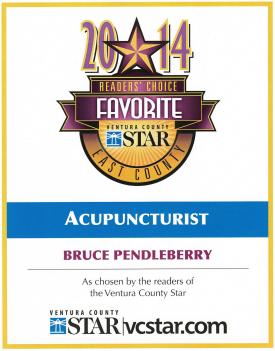Acupuncture is the insertion of fine needles into the body at specific points in order to regulate or influence the Qi (pronounced Chee) of the body. These Acupuncture points have been mapped by the Chinese over a period of two thousand years. Recently, electromagnetic research has further confirmed their locations.
Electroacupuncture: A method of acupuncture in which an electrical current is applied to needles inserted into the body in order to produce a combined needle and electrical stimulus. Electroacupuncture can be used in regular body acupuncture, ear acupuncture, head, and facial acupuncture, and for anesthesia.
Electrostim: The use of electro-stimulation on the acupuncture or Ashi (painful) points without needles, such as TENS and Micro Current.
How deep do the needles go?
That depends upon the nature of the problem, the location of the points selected the patient’s size, age, and constitution, and the acupuncturist’s style or school. Usually, needles are inserted from 0.2 to 4 inches in depth.
Does it hurt?
When I obtained the correct stimulus of the needle, you should feel some cramping, heaviness, distention, tingling, or electric sensation either around the needle or traveling up or down the affected channel. Certain acupuncture points achieve these sensations easier than others and the sensations do not have to be strong or immediate, they may be very mild or delayed. Some Western cultures may categorize these sensations as types of pain, but in China, these sensations are expected, and if the practitioner doesn’t achieve any of these sensations during the acupuncture treatment the patient will usually let them know. In any case, if you experience any discomfort, it is usually mild and limited.
Are the needles clean?
I only use sterilized disposable needles, this eliminates the possibility of transmitting a communicable disease by a contaminated needle.
How does acupuncture work?
Modern Western Medicine cannot fully explain how acupuncture works, but this explanation is getting clearer and clearer, especially due to the tireless work of Donald Kendall, OMD, LAc, and his book “Dao of Chinese Medicine: Understanding an Ancient Healing Art”. Traditional acupuncture is based on ancient Chinese medical theories of the flow of Qi, Blood, and Fluids through distinct Channels or pathways that correspond or correlate to our nerves, arteries, veins, lymphatic, and interstitial fluid system, and their connection with the brain and local tissue. According to Chinese medical theory, acupuncture allows Qi, Blood and Body Fluids to flow to areas where it is Deficient, and away from where it is Excess. In this way, acupuncture regulates and restores the harmonious balance of the body and mind.
In China there is a saying; There is no pain if there is free flow; if there is pain, there is no free flow.
Are there different styles of acupuncture?
Yes, there are. Acupuncture originated in China but has spread to Korea, Japan, Vietnam, Europe, the British Isles, and America. In different countries, different styles have developed based on differing opinions as to theory and technique. Patients should talk to their practitioners about their particular style and learn as much as possible about the treatment being proposed.
How many treatments will I need?
That depends upon the duration, severity, and nature of your complaint. You may need only a single treatment for an acute condition. A series of five to fifteen treatments may resolve many chronic problems. Some degenerative conditions may require many treatments over time.
Since Chinese medicine treats the roots (underlining imbalance) as well as the branches (the external manifestation of the root, usually the symptoms that you feel or see, such as pain, skin discoloration, fatigue, etc) of a disorder, the length of treatment may continue even though the initial complaint is gone. If the root is also treated then the chance of the initial complaint returning will be greatly reduced.
Is there anything I need to do before receiving an acupuncture treatment?
Yes, the following suggestions will help you get the maximum benefits from your treatment.
- Maintain good personal hygiene to reduce the possibility of bacterial and fungal infection.
- To prevent loss, do not wear jewelry.
- Wear loose clothing. Women should not wear one-piece dresses. Avoid wearing tight stockings. Gowns and towels are provided if needed.
- Your treatment may be limited when you are excessively fatigued, hungry, full, emotionally upset, or shortly before or after sex, exercise, or emotional confrontations. If this is a routine occurrence for you then Chinese Herbs and nutritional support may be your primary treatment and acupuncture the secondary treatment.
Is there anything I need to do while receiving acupuncture?
Yes.
- Relax. There is no need to be frightened. Ask me any questions you have along the way so that you can get the most benefit possible from the treatment.
- Do not change your position or move suddenly. If you are uncomfortable, let me know and I will adjust the needles to relieve the discomfort. When you move, certain muscle they may tighten or grip the needle, simply move back to your original position and this should stop, if not ask for assistance.
- Some people experience dizziness, nausea, cold sweat, shortness of breath, or faintness during treatment. This is rare and often occurs if you are sitting or are excessively nervous or fatigued due to lack of food. Inform me immediately so I can readjust or withdraw the needles.



